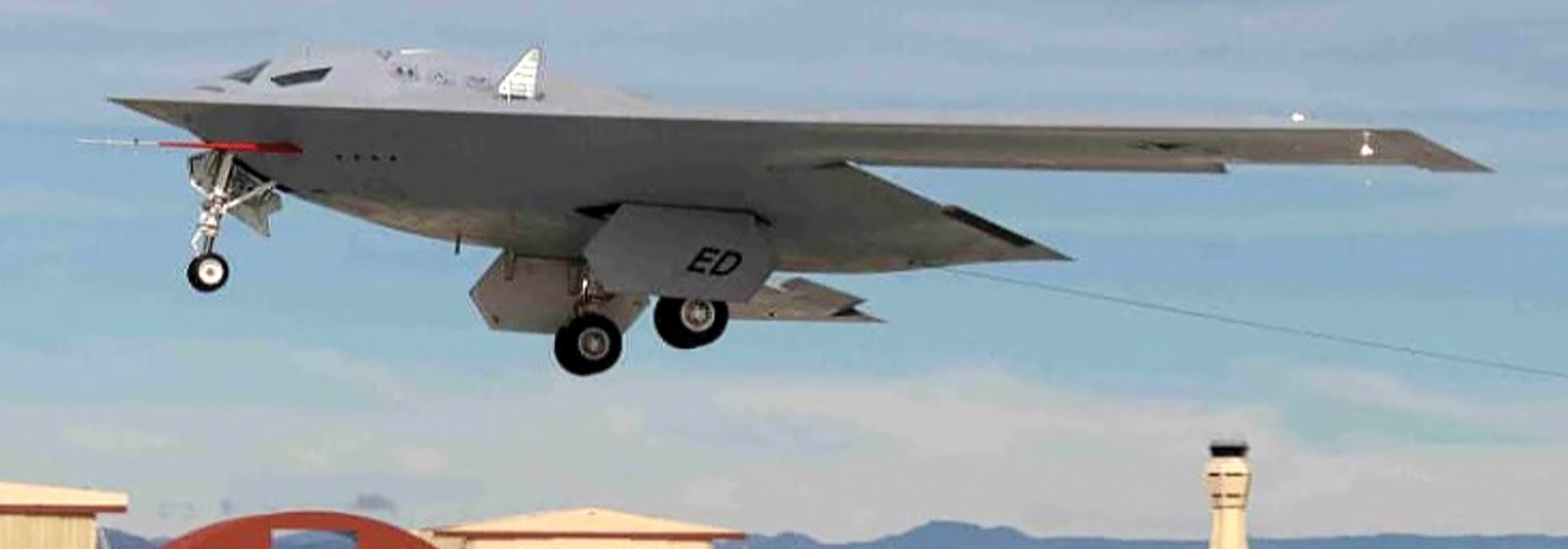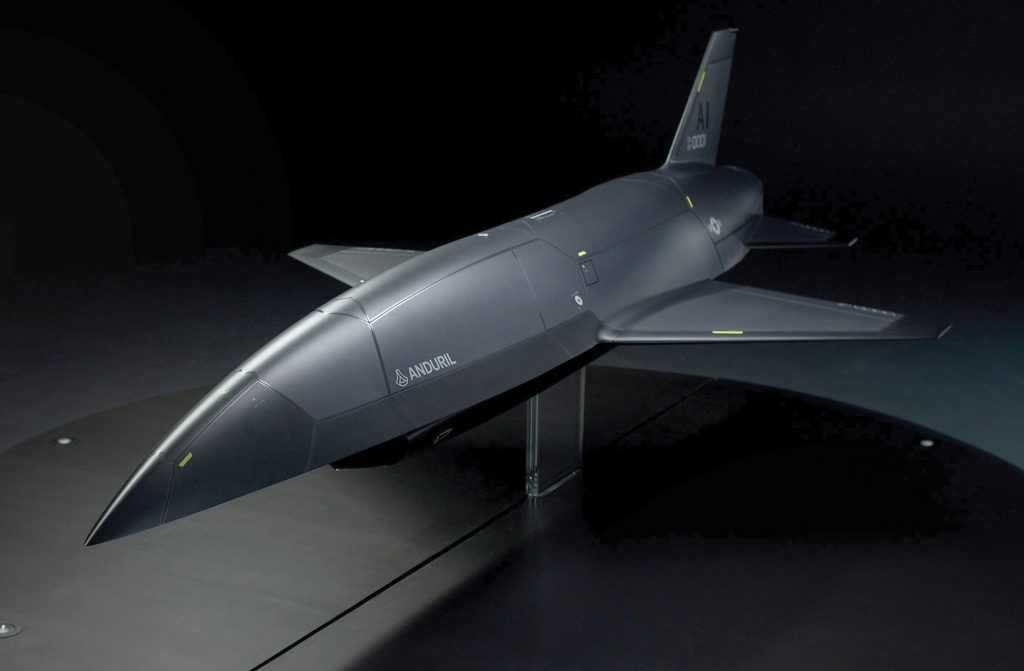Allvin: 100 B-21s Is Still the Goal
By John A. Tirpak
The Air Force is holding to its requirement for 100 B-21 bombers because other options could emerge before that bridge must be crossed, Air Force Chief of Staff Gen. David W. Allvin told the Senate Armed Services Committee on April 16.
“I think we’re not going to reach [100 B-21s] until probably the mid-2030s and beyond,” Allvin said, indicating a production rate numbering fewer than 10 aircraft per year.
Pentagon acquisition and sustainment chief William LaPlante recently said that the B-21’s production rate was deliberately set at a low level to protect it from budget cuts.
USAF first quoted a requirement for 80 to 100 B-21s in 2015, increasing to “at least 100” in recent years, even as independent experts have called for as many as 250 B-21s. That fleet will replace the Air Force’s 19 B-2s and 45 B-1s, while its 75 reengined B-52s will continue to fly for at least two more decades.
Air Force Secretary Frank Kendall, also testifying before the SASC, expressed optimism that the program is “moving forward” appropriately. “We’re pretty happy with the progress,” Kendall said. “I’m always very careful about saying positive things about programs and development … they all have risk. … [But the] B-21 has been performing close to the original schedule and costs and delivering capability,” he said. “It’s in testing. We just had the milestone C approval to enter low-rate production.”
In May, the Air Force revealed it will not repair a B-2 damaged in a December 2022 mishap. Operational and maintenance savings worth some $176 million over the next five years will be redistributed to other needs. “Potential savings in some areas”—such as B-2 O&M—“must be managed at the enterprise level to account for increased costs in others to support National Defense Strategy priorities,” a spokesman said.
The lost aircraft accelerates a planned divestiture by several years, but with the B-21 making progress, its replacement is already in the pipeline. “The Air Force will incrementally retire existing B-1 and B-2 aircraft as B-21s come online,” the spokesman said. “For operational security reasons, we are not going to get into specifics.”
Counting aircraft in depot, maintenance and test, the divestment of another B-2—the second lost out of an original fleet of 21—means the Air Force has about 13 B-2 bombers available for combat at any time.
The B-21’s first operating station will be at Ellsworth Air Force Base, S.D., where military construction to prepare for the new bomber has been underway for some time. The Air Force has previously said that manpower billets will shift from the B-1 and B-2 to B-21 as the latter program matures. The service has also said that the first B-21 test aircraft will be “usable assets” for combat “in the mid-2020s.”
The Air Force recently awarded an indefinite delivery/indefinite quantity contract worth up to $7 billion to B-2 prime contractor Northrop Grumman for depot and line maintenance to carry the B-2 fleet through to its retirement. Although the Air Force has been unclear about when exactly the B-2 fleet will be completely retired, the contract—as well as future years defense plan estimates for B-2 research and development and procurement—ends in fiscal 2028.
Kendall Expects 100 CCAs by 2030
By John A. Tirpak
Though the Air Force plans to buy as many as 2,000 Collaborative Combat Aircraft (CCA) through the late 2030s, only about 100 will be built by 2029, Secretary Frank Kendall told lawmakers April 30. After an initial award, more CCA contracts will follow on a roughly two-year tempo, he said.
During a House Appropriations defense subcommittee hearing, Kendall was asked how many CCAs will be in service and how soon.
“We’ll have over 100 on order or delivered by the end of the [Future Years Defense Program]; that’s for Increment 1,” Kendall said. The FYDP covers the next five years, ending in fiscal 2029.
Kendall noted that he has provided a “planning figure” of 1,000 CCAs. “That’s just really to reflect the fact that we’re serious about this, it’s going to be a significant part of our force structure,” he said.
The Air Force announced Anduril and General Atomics as the finalists for the first increment of CCAs on April 24. The two companies beat out aircraft primes Boeing, Lockheed Martin, and Northrop Grumman for the award, but the service said those companies can compete for the second increment on their own dime. The Air Force has declined to disclose details of the Increment 1 contracts, including their dollar value.
Kendall has said up to 2,000 CCAs might be in the Air Force’s long-term plans. But he told lawmakers that the “ultimate number is going to depend upon all the costs, portability [of technology to and from other platforms] and a number of other factors.”
Regardless, Kendall called CCAs a “fairly transformative change to going away from the individual fighter pilots all out there at risk together, to giving our fighter pilots a wingman.
“It can be attrited to a degree—it’s intended to be survivable—but attritable,” he added, meaning the drones can be lost in acceptable numbers. “That will give us a wide range of tactics and techniques that we currently can’t utilize.”
Asked how many CCAs will be acquired for every crewed fighter, Kendall said two to five is a likely range, but that “we won’t do it for every single fighter, probably—at least not initially.”
Kendall’s desired cost of a CCA will top out at about $25 million to $30 million, he said, a “fraction” of the price of a crewed fighter. That would be about a third of the cost of an F-35, which came in at about $80 million each under the most recently negotiated lot.
Air Force officials have said a contract for Increment 2 is expected to be awarded in 2025 or 2026, but that platform has not yet been defined. Service officials said it started out as being an “exquisite,” high-end, stealthy platform, but the service went back to the drawing board after wargames showed that large numbers of low-end CCAs were more valuable in a Pacific conflict than small numbers of high-end versions.
“The way the program is structured, it has multiple increments; they’re about two years apart,” Kendall explained in the hearing. Increment 1 is meant to go “quickly to production,” he said.
“We expect to have those aircraft in production within a few years and have deliveries before the end of the five-year plan,” he said.
Those first aircraft will “allow us to learn a lot; they’ll give us an operational capability,” Kendall said. “There’ll be a second increment coming along a couple of years behind that one. And we are particularly looking for international cooperation with that second increment.”
Boeing developed its MQ-28 Ghost Bat—also called the Airpower Teaming System—with Australia, and the Air Force has shown interest in that modular, uncrewed aircraft. The U.K. and other international partners are also working on their own autonomous aircraft. Kendall said he and Chief of Staff Gen. David W. Allvin have discussed cooperation with several allies.
Pentagon acquisition and sustainment chief William LaPlante has noted that producing the same platforms or munitions in multiple countries would enhance coalition surge capability and interoperability, and provide a powerful deterrent if such items were produced at scale.
The “secret sauce” that will “enable us to be more rapidly integrating with our allies and partners” is the fact that the CCA will generate a “government-owned reference architecture that we control,” said Allvin at the hearing.
“And so, as we are seeing advancements in the technology, we can maybe set the pace for how we can integrate and work with our allies and partners.”
Anduril and General Atomics Win CCA Contracts
By John A. Tirpak, Unshin Lee Harpley, and Chris Gordon
The Air Force has picked Anduril and General Atomics to continue developing their autonomous Collaborative Combat Aircraft concepts over designs offered by Boeing, Lockheed Martin, and Northrop Grumman, the service announced on April 24. Those firms, however, are still eligible to compete to build the resulting aircraft, USAF said.
“The Department of the Air Force made the decision to continue funding Anduril and General Atomics for detailed designs, manufacture, and testing of production-representative test articles under the Collaborative Combat Aircraft program,” the service noted in a press release. The release stated, “More than 20 companies [may still] compete for future efforts, including future production contracts.”
Since its inception, Air Force officials have suggested that design and production could be separated in order to attract as many companies as possible to contribute to the effort. But vendors interested in competing later will do so, a spokesman said, “at their own expense.”
General Atomics (GA) Aeronautical Systems is an industry veteran, having built the MQ-1 Predator and then the MQ-9 Reaper remotely piloted hunter-killer drones for the Air Force since the 1990s. But Anduril, founded in 2017, is a recent entry in the uncrewed aircraft field. The Silicon Valley startup purchased Blue Force Technologies and its “Fury” stealthy aggressor drone program in the fall of 2023.
GA has promoted its “Gambit” concept for CCAs, which features five platforms optimized for various missions and built around a common core comprised of an engine, keel, and landing gear.
The two were selected for Increment 1 of the CCA program, with a winner to be chosen in 2026. The Air Force also plans a still-to-be-defined Increment 2, which will get underway next year.
Secretary of the Air Force Frank Kendall has said the service plans to build at least 1,000 and as many as 2,000 CCAs through the mid-2030s, at a cost of about $30 million per copy. The concept is for CCAs to give the Air Force “affordable mass” to deal with a growing and highly capable threat posed by China, given that the Air Force can’t build enough aircraft or train enough pilots to overwhelm a peer adversary with manned platforms alone.
Commenting on the selection, Kendall praised the speed of the program and the quality of the entries.
“The progress we’ve made is a testament to the invaluable collaboration with industry, whose investment alongside the Air Force has propelled this initiative forward. It’s truly encouraging to witness the rapid execution of this program,” Kendall said.
Andrew Hunter, Air Force acquisition executive, said continued collaboration “with both current and potential industry partners remains pivotal. Their expertise, innovation, and resources are instrumental in driving this initiative forward, ensuring its success and impact on future operations.”
Lockheed Martin Chief Executive Officer Jim Taiclet said on the company’s first-quarter earnings call on April 23 that the government must be prepared to pay a “risk premium” on contracts where new technology is being invented—such as CCAs—as many companies have taken heavy losses bidding aggressively on fixed-price development projects.
The CCA is budgeted as part of the Next-Generation Air Dominance program, making up one element of NGAD’s “family of systems” concept. The Air Force asked for $577.1 million for the CCA in its fiscal 2025 budget request and plans to spend $8.9 billion on it through fiscal 2029.



